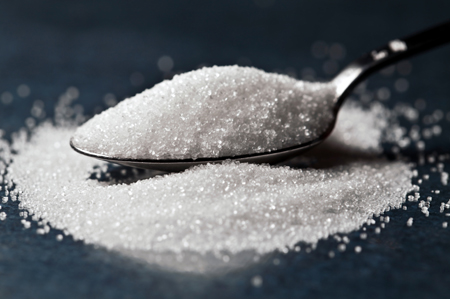Sugar Bulls Rewarded With Best Rally Since 2013 on Tight Supply
Category: Sugar
 (Bloomberg) – Hedge funds that bet big on a sugar rally are being rewarded with the biggest advance for the commodity since 2013 amid a looming global shortage of the sweetener.
(Bloomberg) – Hedge funds that bet big on a sugar rally are being rewarded with the biggest advance for the commodity since 2013 amid a looming global shortage of the sweetener.
Money managers have more than tripled their bullish wagers in just two weeks, increasing their net-long position to the highest in more than a year. A strengthening El Nino weather pattern is posing a threat to output in Australia just as production declines from mills in India to Brazil, the world’s top grower and exporter.
Prices have jumped 11 percent this month, the most among the 22components of the Bloomberg Commodity Index, a measure of returns. The International Sugar Organization predicts that after five years of surplus, demand will outstrip production in the season that started this month. The deficit will more than double to 6.2 million metric tons the next year, the group said in September.
“Much of this move has come on the back of a tightening market,” said Harish Sundaresh, a portfolio manager and commodities analyst in Boston for the Loomis Sayles Alpha Strategies team, which oversees $5 billion. “There seems to be weather problems in Brazil, in certain parts of the country’s Center South region, and India is also worried about the monsoon effect on crops.”
Sugar futures in New York climbed 16 percent over the past three months, the biggest such gain since 2013. Prices are rebounding after reaching a seven-year low in August, spurred by declines for Brazil’s real that encourage exporters to increase shipments that fetch dollars in return. Since then, declines for the South American currency have eased, while dry weather is posing risks to the nation’s crop.
Net-Longs
Money managers boosted their net-long position by 33 percent to 117,090 futures and options contracts in the week ended Oct. 13, data from the U.S. Commodity Futures Trading Commission show. That’s the highest since July 2014. Short holdings have declined in seven of the past eight weeks.
In Brazil, after too much rain disrupted gathering earlier this season, dry conditions are now threatening next year’s harvest, which could worsen the global deficit. At the same time, cane collected this year has had reduced sucrose content, spurring mills to turn more of the crop into ethanol, rather than sweetener. Only about 42 percent of the crop this season has been processed into sugar, down from 44 percent this time last year, industry data show.
The Indian Sugar Mills Association said Sept. 28 the nation’s production will drop 4.6 percent to 27 million tons in the 12 months started Oct. 1. A stronger El Nino would probably bring a lack of rain to the country and further decrease output. China’s production could drop to the lowest in decade, while dryness will also cut supplies in Central American nations and South Africa, according to Tom McNeill, the director of Brisbane, Australia-based Green Pool Commodity Specialists.
This rally “is sustainable because it reflects the new fundamentals,” said Artur Manoel Passos, an economist and commodity analyst with Itau Unibanco Holding SA in Sao Paulo. “The market has changed since September basically because we and most analysts are changing the expectation for supply. Brazilian capacity to switch from ethanol to sugar is lower because there’s not much more cane to be harvested this year. The real won’t be a factor so important for prices at least until next year’s harvest.”
Plentiful Stockpiles
Bigger crops in previous seasons means that global stockpiles are still plentiful. In India, the second-biggest grower, the government last month ordered mills to compulsorily ship sugar in a bid to trim inventories and boost local prices.
Exports can increase from other growers. While the Brazilian real has rebounded 11 percent from a record low against the dollar reached Sept. 24, political turmoil and a slumping economy could spur further weakness to the currency. On Oct. 15, Fitch Ratings downgraded the country’s debt to the cusp of junk. A weak currency cuts production costs for growers and boosts incentives to sell commodities priced in the greenback. Too much ethanol could also send prices for the fuel lower, encouraging more sugar production.
“The fundamental side is really strong, particularly if we start to see the dryness developing in India,” said Lara Magnusen, a La Jolla, California-based portfolio manager at Altegris Investments Inc., which oversees $2.65 billion. Still, “the real correlation has dissipated, but it hasn’t gone away. And you could have government intervention and mandatory exports and that could always throw a wrench in any commodity market.”




